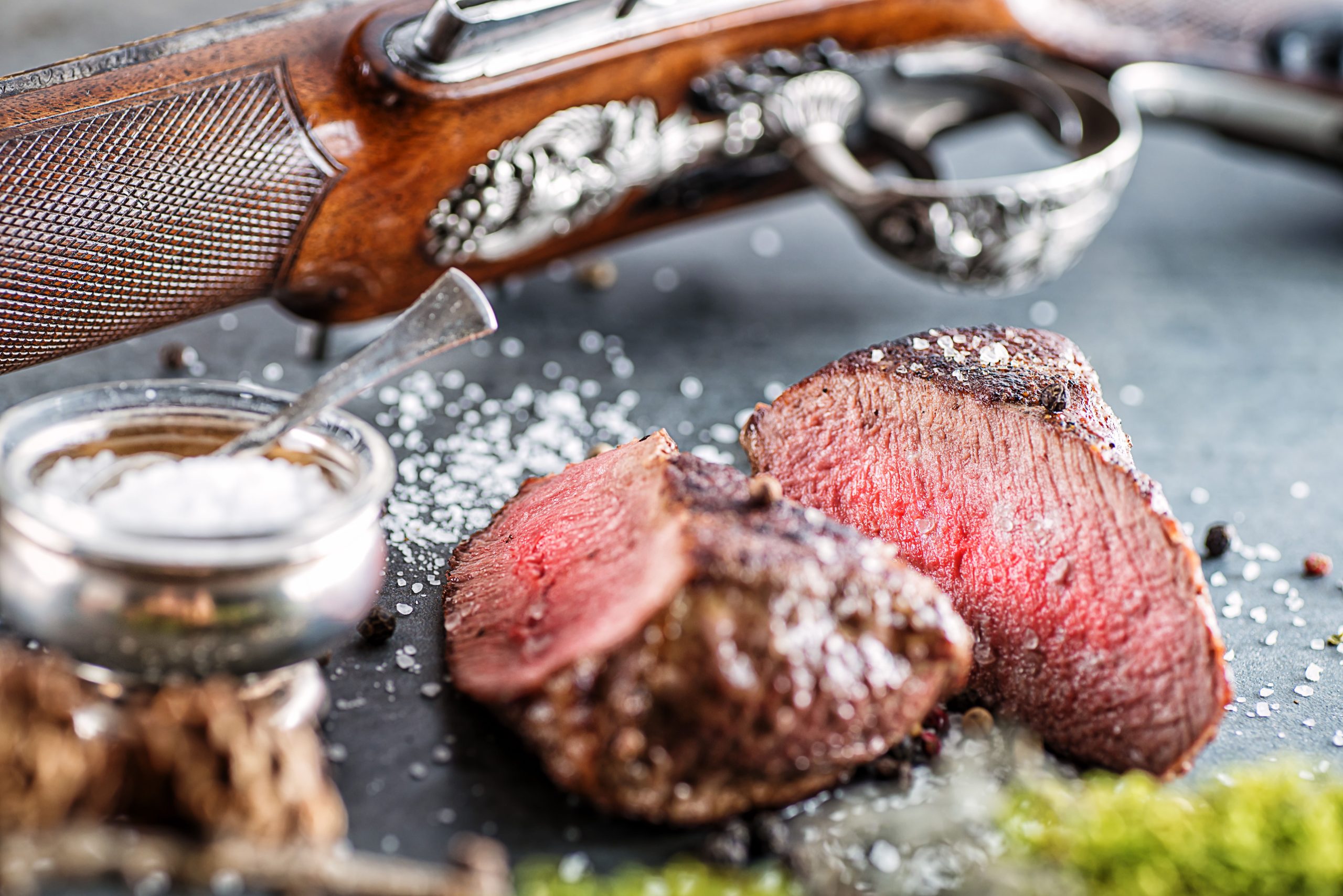How to Process Deer Meat

How to Process Deer Meat
Processing Equipment
For many deer hunters, the experience of the hunt goes beyond the thrill of the chase and extends into feeding ourselves and our families. Venison is a prized staple in hunters’ diets, and can be enjoyed in many forms throughout the year. From jerky and burgers to roasts and steaks, venison offers a unique and versatile option for meals. How you process, season, cook and store it is up to you. Our team at “The Iowa Sportsman” has put together a gear guide filled with some staff favorites for processing.
The Process of Deer Processing
Once the deer is harvested, the processing begins. Many hunters choose to handle this themselves, both to ensure they get exactly the cuts they want and to save on costs. Processing a deer allows you to take it from field to table. It’s essential to work in a clean environment and have the necessary tools—knives, a saw, a cutting board, and storage bags or freezer paper. Some hunters even invest in a grinder for making their own ground venison.
Aging the meat for a few days, either by hanging it in a cold area or in a cooler with ice, can improve tenderness. Once the meat is ready to cut, hunters usually start by removing the larger muscles, like those from the hindquarters, which yield the roasts, steaks, and stew meat. Each cut has its own unique flavor and texture, with certain parts ideal for specific types of dishes.
Jerky!
One of the most popular uses for venison is jerky. Slice the meat into thin strips and marinate it with seasonings like soy sauce, worcestershire sauce, brown sugar, pepper, and garlic before drying it in a dehydrator or smoker. You can also use some kits or mixes to help you get a good flavor. Some hunters enjoy experimenting with spices to create a range of flavors, from spicy to sweet. Jerky is perfect for camping, hiking, or just as a go-to snack. Its long shelf life and ease of packing make it a convenient choice, and its unique taste is a reminder of the hunting season all year long.
Ground Venison
Another popular way to enjoy venison is by grinding it into burger. Ground venison is incredibly versatile, working well in recipes from chili and meatloaf to tacos and spaghetti. It’s leaner than beef, which means it has less fat and calories. Some hunters will mix pork, beef or fat into their burger, but it’s ultimately up to you. The lack of fat, however, can sometimes make it prone to drying out, so many hunters mix it with a small amount of pork or beef fat when grinding to add juiciness and flavor.
Making ground venison is easy to portion out and store in the freezer, making it a quick option for weeknight meals. Ground venison’s mild, slightly gamey flavor pairs well with spices, herbs, and sauces, making it adaptable to almost any dish where ground beef or pork might be used.
Venison Roasts and Steaks
When it comes to venison, few things rival the flavor of a good roast or steak. The cuts from the hindquarters, like the rump and sirloin, are perfect for slow-cooking into a roast. Venison roasts usually have vegetables and a flavorful broth, which tenderizes the meat and brings out its rich flavor. The key to cooking venison roasts is slow, low-heat cooking, as this method helps to preserve moisture and break down connective tissues, making the meat more tender.
Venison steaks, usually cut from the loin or tenderloin, are a delicacy that can rival any beef steak. Known for their tenderness, venison steaks are best enjoyed with simple seasonings that let the meat’s natural flavors shine. Many hunters prefer to cook venison steaks a little rare or medium-rare to avoid toughness, as venison has less fat than beef and can dry out if overcooked. Pan-searing, grilling, or even wrapping the steaks in bacon are all popular methods to add flavor and moisture.
Each type of preparation—whether jerky, ground burger, roast, or steak—highlights a different quality of venison, showcasing its versatility and allowing hunters to enjoy the fruits of their labor in a variety of ways. As a result, venison is a staple in many hunters’ diets, not only for its nutritional value but also for the pride that comes from knowing the food on the table was earned through hard work and respect for the land. From the hunt to the dinner plate, venison is more than just meat; it’s a connection to tradition, nature, and the essence of the hunt.
By Jessica Graham
January 2025


